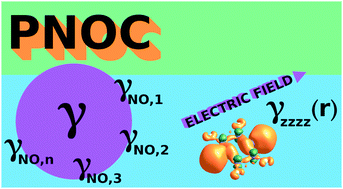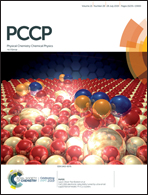Partition of optical properties into orbital contributions†
Abstract
Nonlinear optical properties (NLOPs) play a major role in photonics, electro-optics and optoelectronics, and other fields of modern optics. The design of new NLO molecules and materials has benefited from the development of computational tools to analyze the relationship between the electronic structure of molecules and their optical response. In this paper, we present a new means to analyze the response property through the partition of NLOPs in terms of orbital contributions (PNOC). This tool can be used to obtain a real-space representation of the NLOPs, providing a powerful visualization aid to connect the magnitude of the optical property with some parts of the molecule. Unlike other methods to analyze NLOPs, the PNOC decomposes the optical property into orbitals of the unperturbed system, furnishing this method with the ability to assess the performance of single- and multi-determinant electronic structure methods. PNOC can be also used to design small basis sets for an accurate description of large systems, saving a substantial amount of computer time for the calculation of optical properties.

- This article is part of the themed collection: 2019 PCCP HOT Articles


 Please wait while we load your content...
Please wait while we load your content...